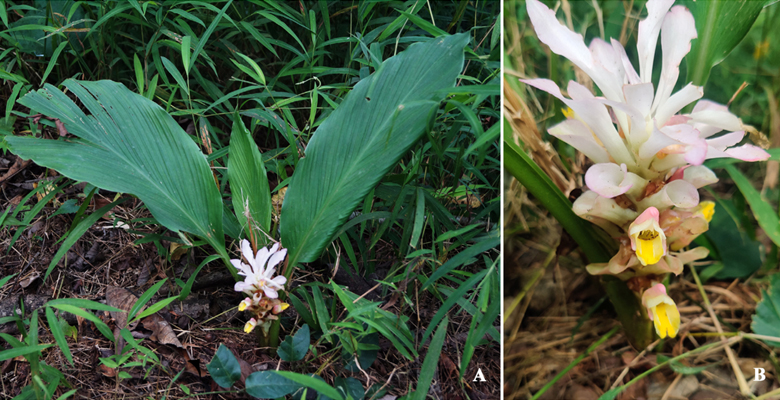Researchers from the Indian National Science Academy (INSA) Senior Scientist program have identified a new species of Curcuma in Mokokchung, Nagaland. This new species, named Curcuma ungmensis, is named after the village Ungma, where it was first discovered. The discovery emphasizes the rich biodiversity of the region and introduces a notable addition to the Zingiberaceae family.
Discovery Details
- Publication: The discovery was published in the prestigious journal Phytotaxa on 20 August 2024, which is renowned for botanical taxonomy.
- Researchers: The species was identified by Mamiyil Sabu and VS Hareesh from KSCSTE-Malabar Botanical Garden and Institute for Plant Sciences, Calicut, Kerala, along with P Tiatemsu from the Department of Botany, Fazl Ali College, Mokokchung, Nagaland.
- Discovery Date: The plant was discovered during a field trip in September 2023.
Characteristics of Curcuma ungmensis
- Location: The plant was found along a roadside in Ungma Village, approximately three kilometers from Mokokchung Town towards Tuensang.
- Physical Features: Curcuma ungmensis features prominent, much exserted flowers nearly double the size of its floral bracts. It is notable for its unique white prominent coma bracts and tall rhizomatous herb structure, standing 65–90 cm in height.
- Flowering: The plant blooms during the rainy season from August to October and enters dormancy by January. The flowers bloom in the morning and last only for a single day.
Botanical Significance
- Uniqueness: The new species exhibits distinctive characteristics not matching any previously described species of Curcuma. A thorough examination of all known Asian species confirmed its novelty.
- Potential Uses: Curcuma ungmensis has potential as an ornamental species due to its attractive flower color and could be introduced into horticulture following proper domestication.
Conservation Concerns
- Threats: The species faces threats from human activities such as road widening, construction, and urbanization, as well as natural calamities.
- Population: Preliminary observations indicate that more than 1000 individuals are present in the locality.
Scientific Impact
The discovery enriches the scientific understanding of the Curcuma genus and highlights the botanical diversity of Nagaland. It underscores the need for continued exploration, research, and conservation of the region’s unique plant life.
Multiple-Choice Questions (MCQs):
- What is the name of the newly discovered Curcuma species?
- A) Curcuma nagalensis
- B) Curcuma ungmensis
- C) Curcuma mokokchungensis
- D) Curcuma phytotaxa
- In which journal was the discovery of Curcuma ungmensis published?
- A) Journal of Botanical Studies
- B) Phytotaxa
- C) Botanical Review
- D) Plant Taxonomy Today
- Who are the researchers credited with discovering Curcuma ungmensis?
- A) Mamiyil Sabu and VS Hareesh
- B) P Tiatemsu and VS Hareesh
- C) Mamiyil Sabu and P Tiatemsu
- D) Mamiyil Sabu, VS Hareesh, and P Tiatemsu
- Where was Curcuma ungmensis first discovered?
- A) Tuensang Town
- B) Mokokchung Town
- C) Ungma Village
- D) Calicut
- What are the primary threats to Curcuma ungmensis?
- A) Climate change
- B) Overharvesting
- C) Human activities and natural calamities
- D) Pests and diseases
